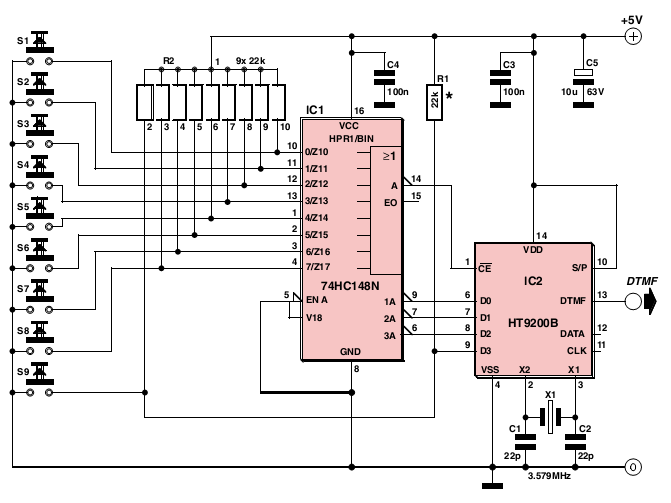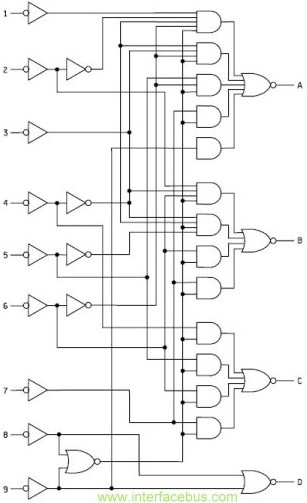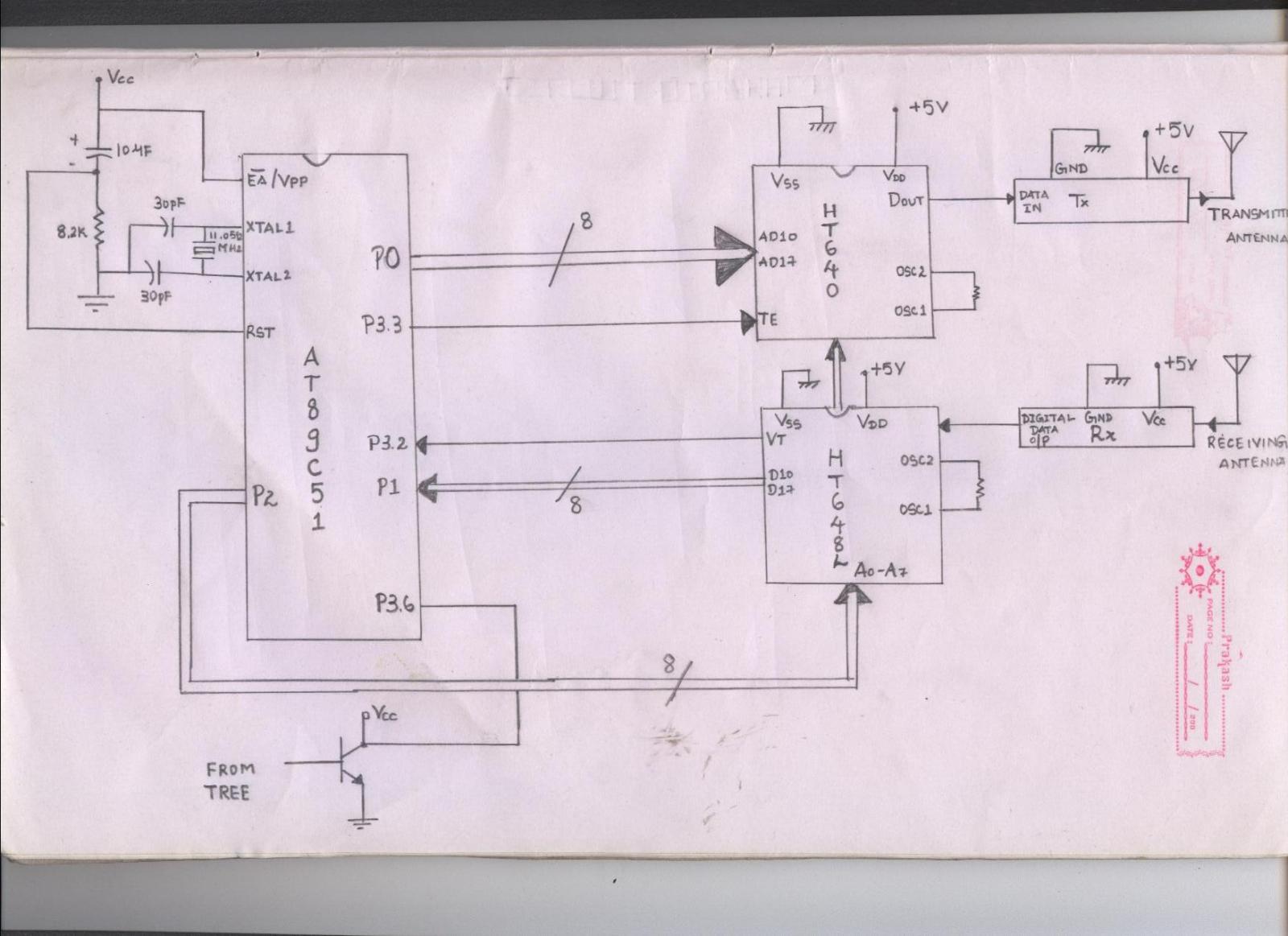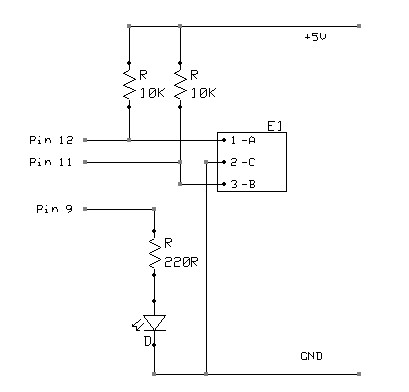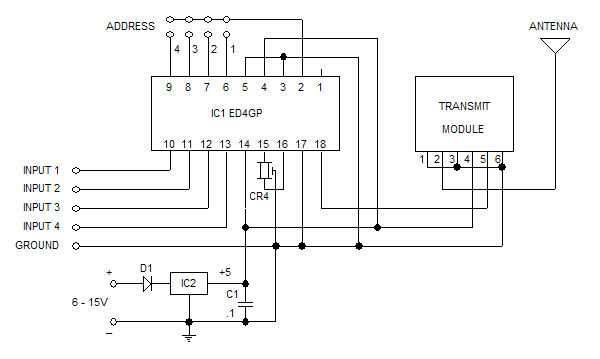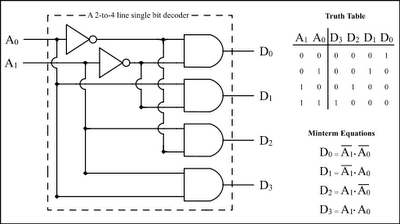
MFM Encoder
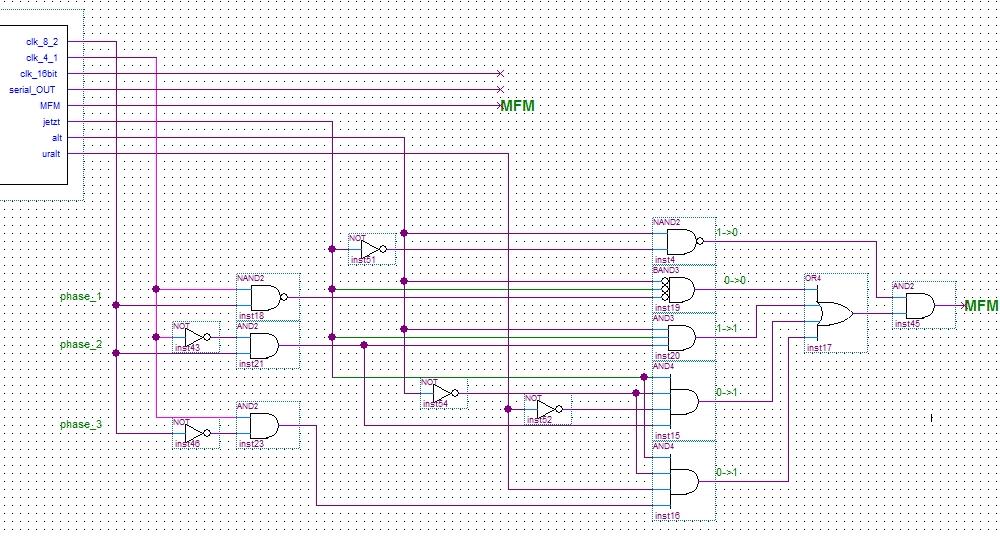
An MFM Encoder operates based on the principles of time shifting and phase shifting. This technique relies on the transmission frequency, with MFM signals generated in conjunction with double the transmission frequency. Further information regarding MFM can be found on various websites. The MFM Encoder developed for the RL02 simulator project is in version V1.2. It functions with a transmission frequency of 4.1 MHz. The necessary 8.2 MHz is generated through a divider using an input frequency of 16.4 MHz. The 16.4 MHz frequency is historically significant, as the MAXII CPLD used in this project did not have a PLL available, necessitating the creation of this frequency with an external oscillator. A schematic circuit diagram of the Encoder is provided for those who prefer a graphical representation over a Verilog implementation. The development process, which initially relied on a block diagram with individual components and gates, became increasingly complex and inefficient, leading to the replacement of most modules with Verilog programs. The individual steps in the development of the MFM encoder are also detailed to complete this section.
The MFM (Modified Frequency Modulation) Encoder is crucial for encoding data in a manner that optimizes bandwidth and minimizes errors during data transmission. The core principle of the MFM Encoder is to modulate the data signal by shifting the timing of the bits and altering the phase of the signal. This results in a more efficient use of the available bandwidth, allowing for higher data rates.
In this implementation, the encoder operates at a fundamental transmission frequency of 4.1 MHz. To achieve the required 8.2 MHz for MFM encoding, a frequency divider is employed, which takes an input frequency of 16.4 MHz. This design choice is rooted in historical constraints, as the MAXII CPLD used in the project lacked an integrated Phase-Locked Loop (PLL) for frequency generation. Therefore, an external oscillator was utilized to generate the necessary clock signals.
The schematic representation of the MFM Encoder provides a visual aid for understanding the circuit's functionality. It illustrates the interconnections between various components, such as the oscillator, frequency divider, and the encoding logic. The graphical representation allows for easier comprehension of the signal flow and the relationships between different parts of the circuit.
The development process transitioned from a block diagram approach, which involved discrete components and logic gates, to a more efficient methodology utilizing the Verilog hardware description language. This shift was driven by the increasing complexity of the design, which rendered the initial approach less practical. By employing Verilog, the design can be modularized, making it easier to implement, test, and modify.
In conclusion, the MFM Encoder for the RL02 simulator project exemplifies the application of modern digital design techniques to achieve efficient data encoding. The combination of time and phase shifting, along with the careful selection of frequencies, ensures reliable data transmission. The transition to a Verilog-based design enhances the overall efficiency of the development process, facilitating future enhancements and iterations of the encoder.A MFM Encoder works according to the principle of time shifting and phase shifting. This method is based on the transmitting frequency and the MFM signals are generated in connection with the double transmitting frequency. More details concerning the MFM can be obtained from several sites in the Internet. In the meantime, I have got used to the h ardware description language Verilog at my RL02 simulator project very well. My ready developed MFM-ENCODER is obvious in the version V1. 2 with a detailed description here. The MFM Encoder at my RL02 simulator project works with a transmitting frequency of 4. 1 MHz. The necessary 8. 2 MHz are created via divider with an input frequency of 16. 4 MHz. The 16. 4 MHz are conditional historically since at my MAXII CPLD either these MFM encoder came to use, no PLL was available, though, so that the frequency had to be created with an external oscillator. In the following picture the real one part of the Encoder is represented as a schematic circuit diagram for everyone who prefers this graphic rendition comparing to a Verilog implementation.
The development based on blockdiagram with individual components and gates got more problematic and inefficient. I have given up this kind of development and replaced most of my modules by Verilog programs. The individual steps at the development of the MFM encoder also are shown to complete this section: 🔗 External reference
The MFM (Modified Frequency Modulation) Encoder is crucial for encoding data in a manner that optimizes bandwidth and minimizes errors during data transmission. The core principle of the MFM Encoder is to modulate the data signal by shifting the timing of the bits and altering the phase of the signal. This results in a more efficient use of the available bandwidth, allowing for higher data rates.
In this implementation, the encoder operates at a fundamental transmission frequency of 4.1 MHz. To achieve the required 8.2 MHz for MFM encoding, a frequency divider is employed, which takes an input frequency of 16.4 MHz. This design choice is rooted in historical constraints, as the MAXII CPLD used in the project lacked an integrated Phase-Locked Loop (PLL) for frequency generation. Therefore, an external oscillator was utilized to generate the necessary clock signals.
The schematic representation of the MFM Encoder provides a visual aid for understanding the circuit's functionality. It illustrates the interconnections between various components, such as the oscillator, frequency divider, and the encoding logic. The graphical representation allows for easier comprehension of the signal flow and the relationships between different parts of the circuit.
The development process transitioned from a block diagram approach, which involved discrete components and logic gates, to a more efficient methodology utilizing the Verilog hardware description language. This shift was driven by the increasing complexity of the design, which rendered the initial approach less practical. By employing Verilog, the design can be modularized, making it easier to implement, test, and modify.
In conclusion, the MFM Encoder for the RL02 simulator project exemplifies the application of modern digital design techniques to achieve efficient data encoding. The combination of time and phase shifting, along with the careful selection of frequencies, ensures reliable data transmission. The transition to a Verilog-based design enhances the overall efficiency of the development process, facilitating future enhancements and iterations of the encoder.A MFM Encoder works according to the principle of time shifting and phase shifting. This method is based on the transmitting frequency and the MFM signals are generated in connection with the double transmitting frequency. More details concerning the MFM can be obtained from several sites in the Internet. In the meantime, I have got used to the h ardware description language Verilog at my RL02 simulator project very well. My ready developed MFM-ENCODER is obvious in the version V1. 2 with a detailed description here. The MFM Encoder at my RL02 simulator project works with a transmitting frequency of 4. 1 MHz. The necessary 8. 2 MHz are created via divider with an input frequency of 16. 4 MHz. The 16. 4 MHz are conditional historically since at my MAXII CPLD either these MFM encoder came to use, no PLL was available, though, so that the frequency had to be created with an external oscillator. In the following picture the real one part of the Encoder is represented as a schematic circuit diagram for everyone who prefers this graphic rendition comparing to a Verilog implementation.
The development based on blockdiagram with individual components and gates got more problematic and inefficient. I have given up this kind of development and replaced most of my modules by Verilog programs. The individual steps at the development of the MFM encoder also are shown to complete this section: 🔗 External reference
